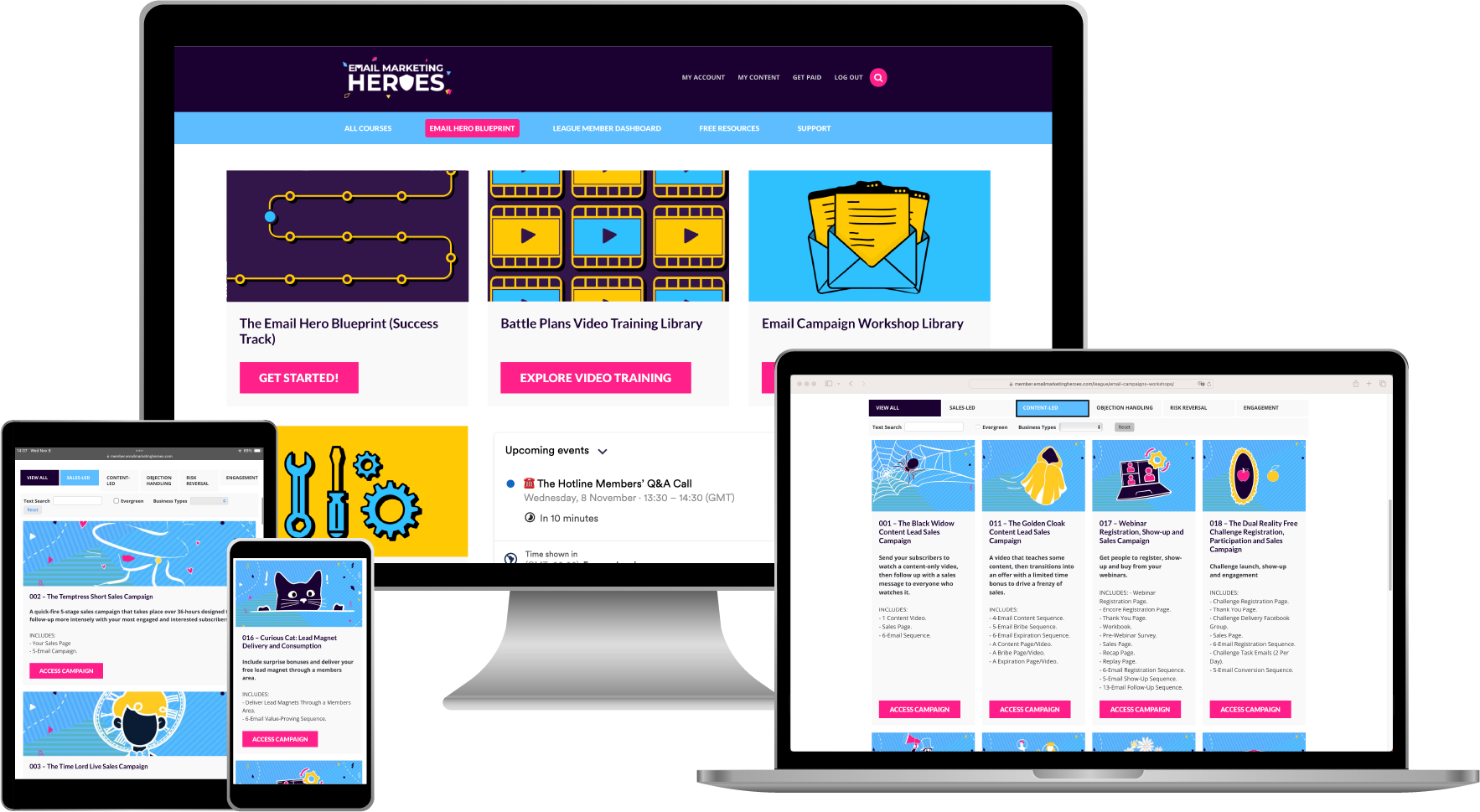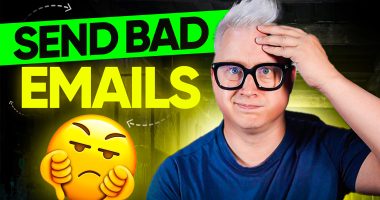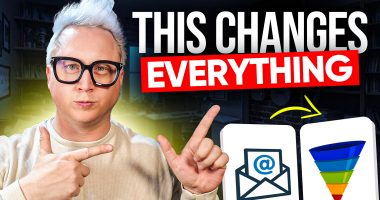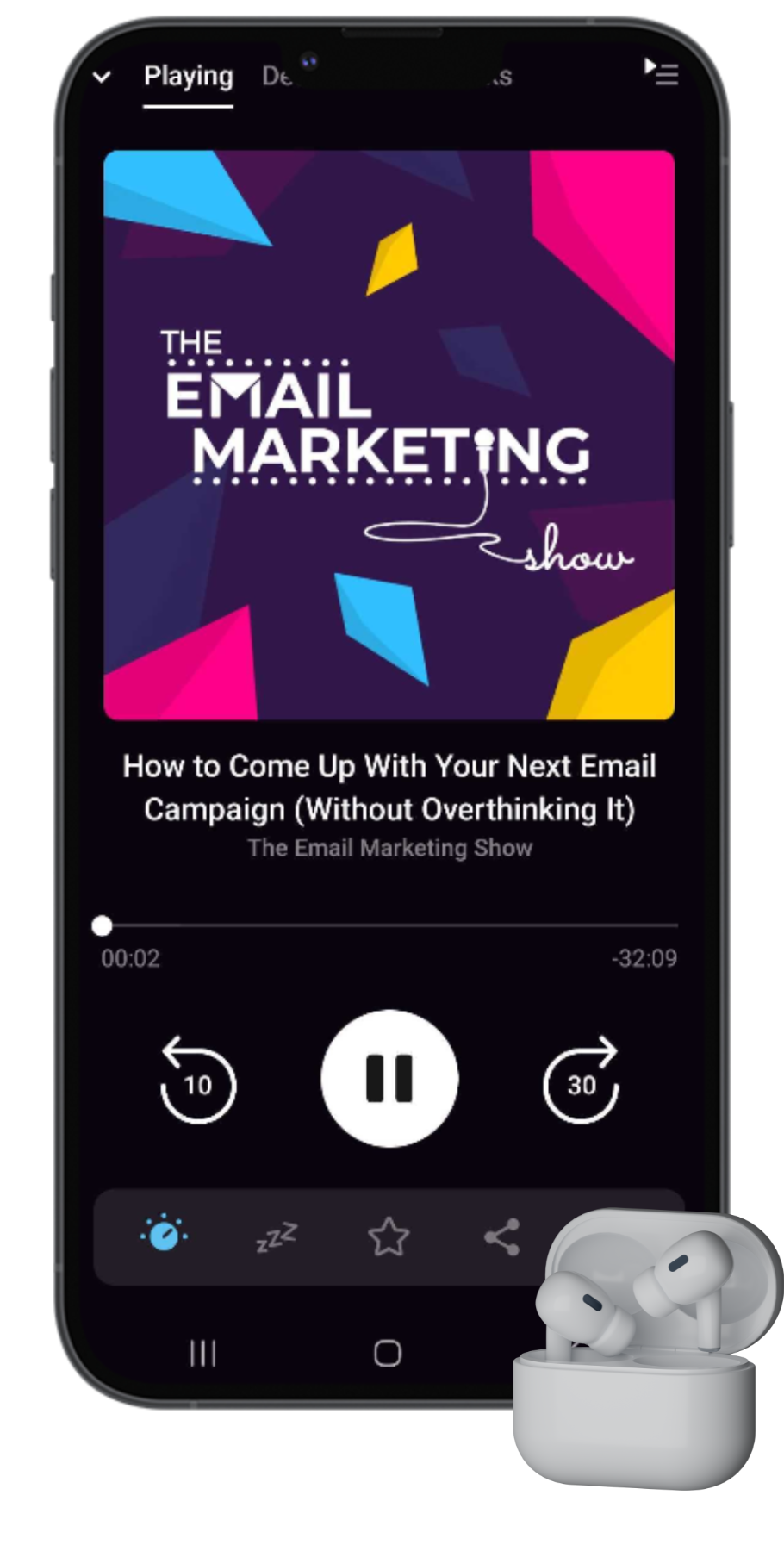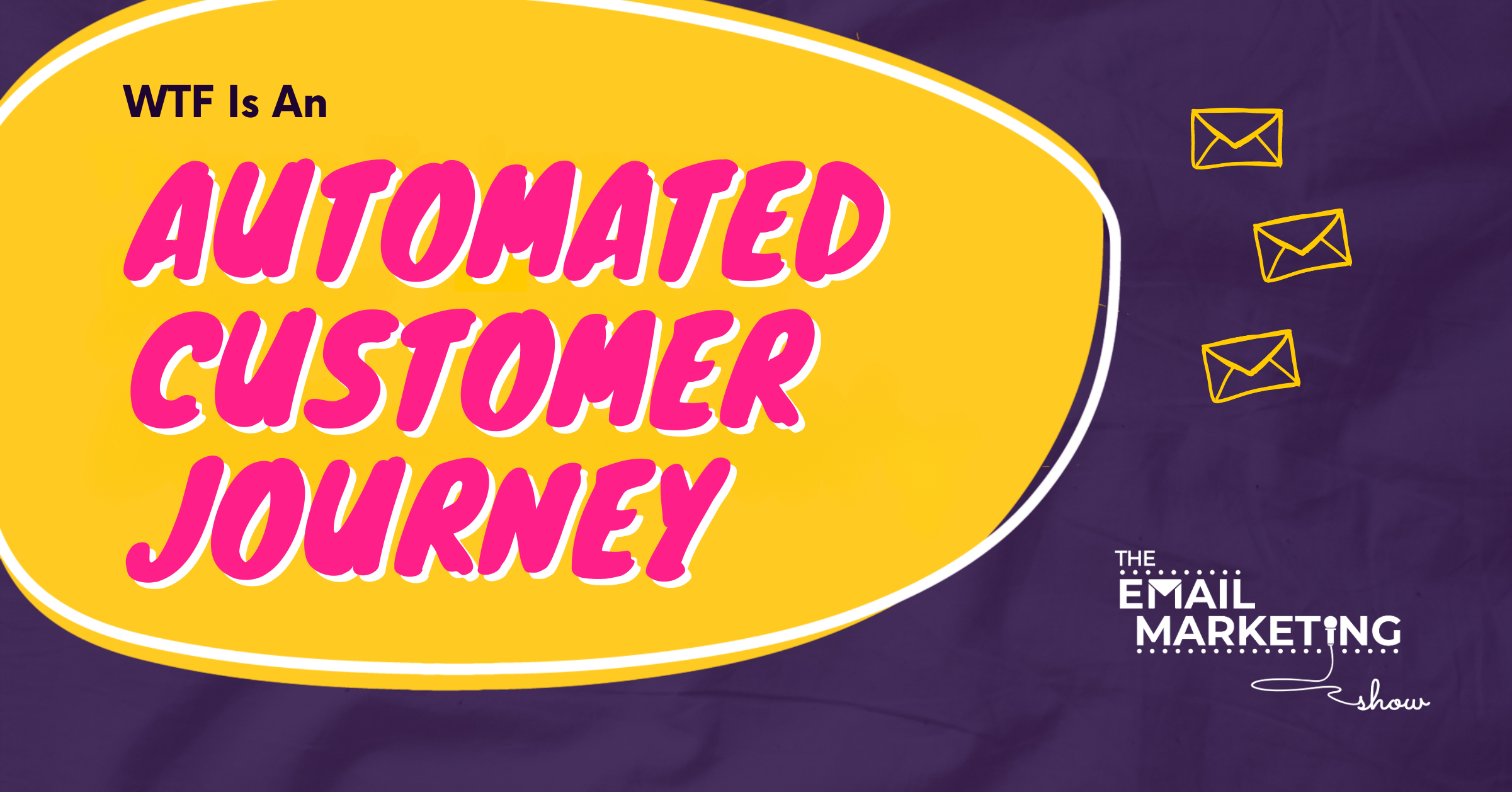
WTF Is An Automated Customer Journey? Use the SCORE Method
WTF is an automated customer journey and why do you need to worry about it? We’re Kennedy and Fifi, and today we’re going to dig into what automated customer journeys really are, why they work, and how to build them into your email marketing strategy.
Plus, we’ll even peel back the curtain on the SCORE Method, our proven framework for engaging subscribers and turning them into buyers, without all the fuss and confusion.
Let's do this.
Want to get more sales from your email marketing?
Before we get started with today’s episode, we’ve put a little something together for you.
It's really cool and it's FREE (yes, it's cool and free – we're nice like that). Until you're making a consistent $10,000 per month in your business, it can feel like you're riding peaks and troughs and feel stuck in the weeds of your business.
That's why we've created this on-demand training to show you the easiest and most predictable way to hit consistent $10k months from your EXISTING audience. You can watch it here.
What is an ‘Automated Customer Journey'?
An automated customer journey is a series of automated emails that guide subscribers from their initial sign-up through various stages of your funnel, ideally leading to a purchase.
Sounds complex? Not with our SCORE Method.
It’s a psychological sequence of email campaigns that cater to different buyer mindsets, making the whole process both easier for you and more effective for your subscribers.
Introducing the SCORE Method:
The secret sauce to our success is the SCORE Method – an automated series of campaigns that speaks to different subscriber types, all designed to turn them into paying customers. Here’s a breakdown:
S – Sales-Led Campaign
This initial sequence appeals to the hyper-aware buyer who's ready to solve their problem immediately.
These emails are direct, offering the core product as the solution. Think of it like you’re a doctor treating a patient with an urgent condition – you don’t waste time telling them the story of how you became a doctor, you give them the remedy straight away!
C – Content-Led Campaign
Next, we move into a content-led campaign.
Here, you’re offering value upfront through educational content, which naturally leads into your product offering. This isn’t just about selling. It’s about showing your expertise and getting subscribers to trust you more deeply.
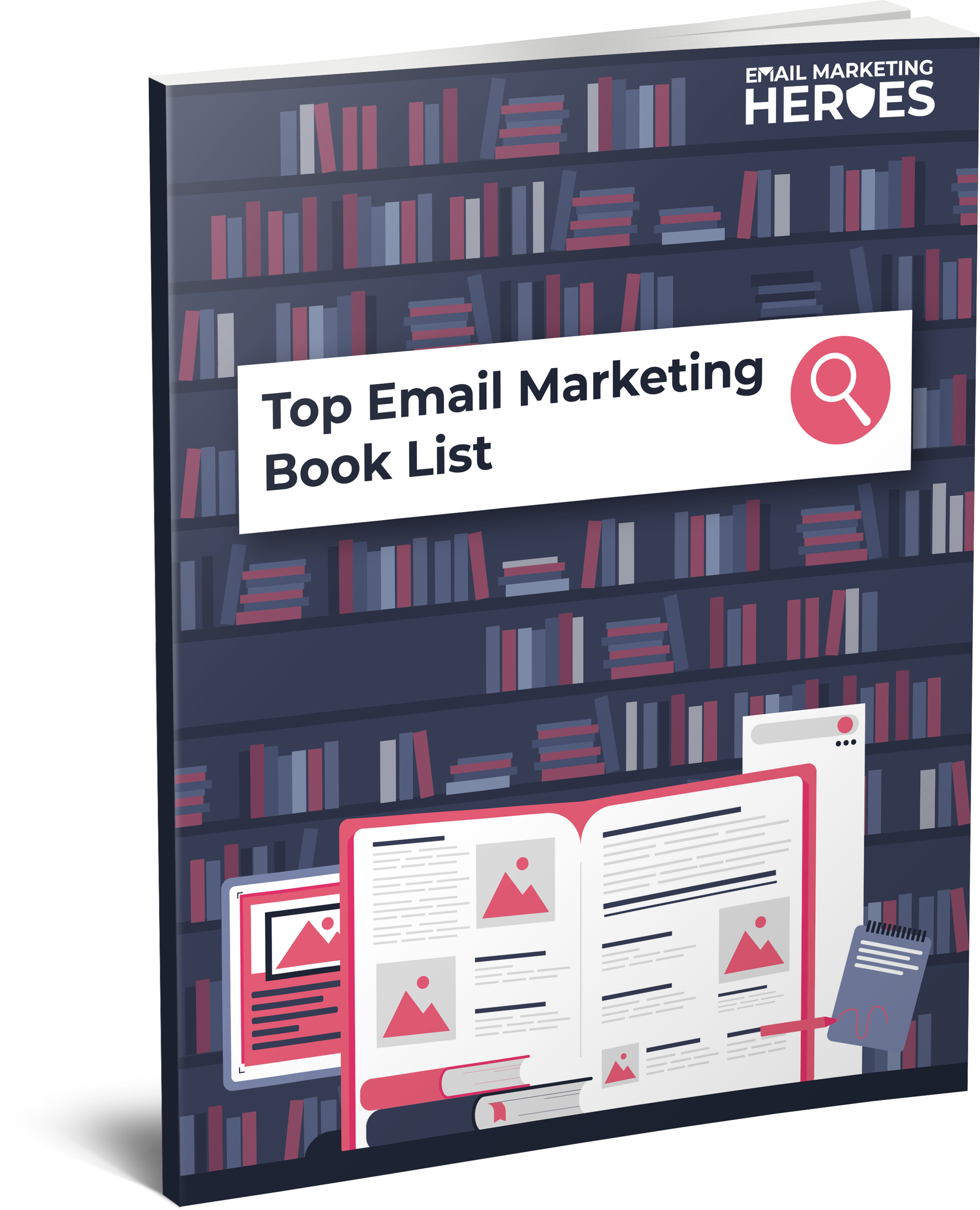
The Top 10 Books To 'Power Up' Your Email Marketing
10 book recommendations that will improve all areas of your email marketing (including some underground treasures that we stumbled upon which have been game-changing for us).
O – Objection Handling Campaign
People don’t buy for all sorts of reasons (eg.price, timing, uncertainty)
This sequence tackles those objections head-on. Whether through a simple email asking why they haven’t purchased or a more sophisticated survey, this stage is crucial for understanding and addressing buyer hesitations.
R – Risk Reversal Campaign
This step reduces the perceived risk of purchasing your product. Examples include offering a trial period, breaking off a smaller piece of your main product (splintering), or providing a payment plan. Lowering the barrier to entry helps ease prospects into becoming customers.
E – Engagement
Finally, you want to keep people engaged with your emails long-term.
This includes nurturing them with your regular newsletters, engaging hyper-active subscribers, and re-engaging those who have started to drift away. Automation can help you keep track of this, making sure that your list stays active and engaged.
Why Does The SCORE Method Work?
Most businesses fail to nurture their subscribers towards a sale, focusing on the initial sign-up without following through.
By layering automations, you ensure that you’re not only keeping your list warm but also continuously moving subscribers closer to a purchase. The key is recognising that not every subscriber is ready to buy at the same time or for the same reason, which is why SCORE appeals to different types of buyers throughout the journey.
Subject line of the week
This week’s subject line? “Columbo in a Skirt.”
It’s short, snappy, and fun. Plus, it piqued curiosity in a way that outperformed Kennedy’s AI in his split-test, proving that sometimes the personal touch still wins. Try to use pop culture references or a dash of humor to stand out in a crowded inbox.
Resources
Related episodes
Best Email Marketing Campaign To Get Your Customers To Buy Again (And Again).
What We Really Think About Customer Avatars.
The Only Email Marketing Campaign Types You’ll Ever Need.
FREE list to improve your email marketing
If you want to write better emails, come up with better content, and move your readers to click and buy, here's how. We put together this list of our Top 10 most highly recommended books that will improve all areas of your email marketing (including some underground treasures that we happened upon, which have been game-changing for us). Grab your FREE list here.
Join our FREE Facebook group
If you want to chat about how you can maximise the value of your email list and make more money from every subscriber, we can help! We know your business is different, so come and hang out in our FREE Facebook group, the Email Marketing Show Community for Course Creators and Coaches. We share a lot of training and resources, and you can talk about what you're up to.
Try ResponseSuite for $1
This week's episode is sponsored by ResponseSuite.com, the survey quiz and application form tool that we created specifically for small businesses like you to integrate with your marketing systems to segment your subscribers and make more sales. Try it out for 14 days for just $1.
Join The Email Hero Blueprint
Want more? Let's say you're a course creator, membership site owner, coach, author, or expert and want to learn about the ethical psychology-based email marketing that turns 60-80% more of your newsletter subscribers into customers (within 60 days).
If that's you, then The Email Hero Blueprint is for you.
This is hands down the most predictable, plug-and-play way to double your earnings per email subscriber. It allows you to generate a consistent sales flow without launching another product, service, or offer. Best news yet? You won't have to rely on copywriting, slimy persuasion, NLP, or ‘better' subject lines.
Subscribe and review The Email Marketing Show podcast
Thanks so much for tuning into the podcast! If you enjoyed this episode (all about creating an automated customer journey and using email marketing automation in your business) and love the show, we'd really appreciate you subscribing and leaving us a review of the show on your favourite podcast player.
Not only does it let us know you're out there listening, but your feedback helps us to keep creating the most useful episodes so more awesome people like you can discover the podcast.
And please do tell us! If you don't spend time on email marketing, what do you really fill your working days with? We'd love to know!

